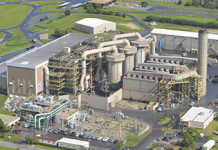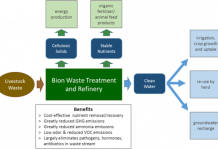by Debra Fiakas CFA
 Coal emissions photo via BigStock |
An electric utility of Southern Company’s size – $38.3 billion in market capitalization – is not among the typical company covered in the Small Cap Strategist weblog. Southern (SO: NYSE) owns and operates six dozen power plants in the southeastern U.S., generating 12,222 megawatts of power from a mix of fossil fuel, hydroelectric, nuclear and solar plant assets. The company earned $2.68 in earnings per share on $16.5 billion in total electric power sales. Sales dipped in 2012 compared to the prior year as mild weather conditions led to a fall off in heating and air conditioning needs. Nonetheless, profits were a bit higher in the year on higher profit margins. Indeed, Southern is a bit more profitable than the industry average. Still Southern’s stock trades a bit below the average multiples of earnings and cash flow. The gaggle of analysts following Southern expect growth over the next year. The consensus earnings estimate is $2.76 on $18.0 billion in total sales and predicted growth rates are near 5.0%.
Most investors probably focus on Southern’s generous dividend payout ratio that has resulted in a dividend yield of 4.5%. However, we are more interested in how progressive Southern appears as one of the founding members of an international group devoted to developing carbon capture technologies.
The U.S. managed to reduce its overall carbon emissions in 2011 by 1.7%. The verdict is still out on 2012. One of the principal drivers of reduced emissions is the swap of coal-based power plants for new plants that burn cleaner natural gas. As beguiling as this dynamic might be given ample natural gas supplies, it may still not be enough. This is apparently why Southern is hard at work trying to find a means to tuck away offending carbon emissions.
Southern Company manages and operates the U.S. Department of Energy’s National Carbon Capture Center. The Center is testing a technology which would capture carbon dioxide in flue gas and then deposit then deposit it underground. An amine solvent reacts with the carbon dioxide in the flue gas, making it possible to sequester it. Pilot tests are relying on an underground oil field near Alabama where the Center is located. Southern claims this is the largest carbon capture demonstration in the world, capturing 150,000 tons of carbon dioxide annually.
The project has no impact on Southern’s near-term financial results. However, with 34 emission-belching fossil fuel plants in Southern’s power generation portfolio, it will benefit in the long-term from a technology that could provide a shield from emissions fines. Greenhouse gas emissions (GHGs), of which carbon dioxide is the principal culprit, are regulated from large stationary sources under the EPA’s GHG Tailoring Rule. In January 2013, an oil and gas production company became the first business in the country fined by EPA for violations of the Act. The fine totaled $34,000. It is not such a significant sum, but the action makes clear the EPA will pursue fines.
Under the Clean Air Act, new power plants may not emit more than 1,000 pounds of carbon dioxide per megawatt hour. Most new natural gas-fired plants meet that standard. However, even new coal-fired plants emit as much as 1,800 pounds per megawatt hour. That means realize the value of existing coal-fired plant assets or to build new coal-fired plants where natural gas is not available, utility companies must capture the carbon dioxide before it hits the atmosphere.
Debra Fiakas is the Managing Director of Crystal Equity Research, an alternative research resource on small capitalization companies in selected industries.
Neither the author of the Small Cap Strategist web log, Crystal Equity Research nor its affiliates have a beneficial interest in the companies mentioned herein.









Very interesting article, I’m wondering what happens now to the heavy metals ( lead, arsenic ect) that are also in the smoke that is being trapped underground. Do they end up underground where they can get into the aquafir and water….